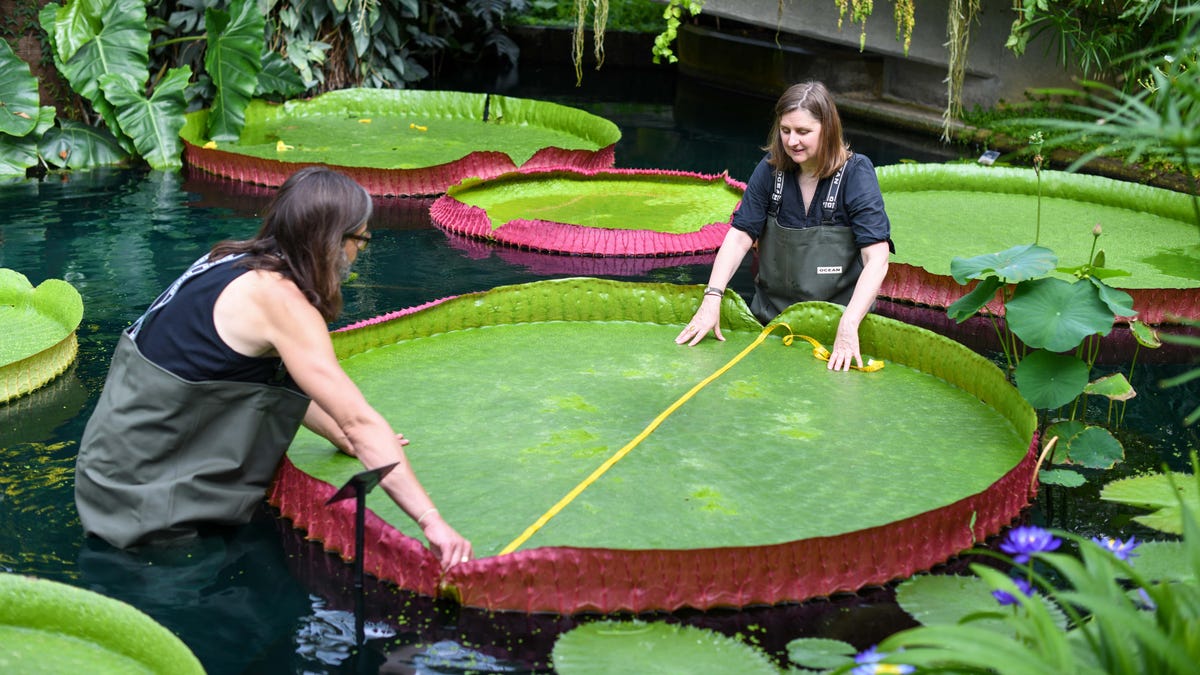World's Largest Water Lily Hid in Plain Sight for 177 Years
To be fair, it looked a lot like another species.
There's a lot to see when you visit Kew Royal Botanic Gardens in London, but one of the highlights is the collection of big, beautiful water lilies. In a surprise discovery, the scientists have welcomed a new giant water lily species now named Victoria boliviana. And it's the largest in the world, Kew said Monday.
Botanical artist Lucy Smith and botanist Carlos Magdalena inspect the underside of Victoria boliviana.
The lily had been a part of Kew's Herbarium, a massive collection of preserved plants, for 177 years. According to Kew, this is the first discovery of a new giant water lily species in over a century.
The lily had been erroneously identified as the species Victoria amazonica. Carlos Magdalena, a senior botanical horticulturist at Kew, suspected there was another species of Victoria water lily -- besides amazonica and one called cruziana -- out there. This kicked off a sleuthing effort that involved botanic gardens in Bolivia.
The water lily is native to Bolivian wetlands. Magdalena grew seeds donated from Bolivia and knew the new plants were different from the previously known species. "Victoria boliviana has a different distribution of prickles and seed shape to other members of the Victoria genus, making it distinct," according to Kew.
Victoria boliviana has short-lived blooms that turn from white to pink.
A team of researchers published a paper on the lilies in the journal Frontiers in Plant Science on Monday. The study draws on data from historical records, DNA, specimens in garden collections, wild examples and even social media posts from water lily enthusiasts who document the plants.
Victoria boliviana grows leaves that stretch over 9.8 feet (3 meters) across. "The underside of their leaves is also a sight to behold, resembling a cross between a suspension bridge and the roof of an old cathedral," said Kew. The flowers start off white and turn pink.
Kew is now growing Victoria boliviana in its Waterlily House. All three species of giant water lilies live in the Princess of Wales Conservatory at the gardens, the only place in the world where they are grown together. The giant pads are famously robust enough to hold a small child. Visitors won't get a chance to climb on board, but they will get to witness a natural wonder due to some sharp botanical detective work.


